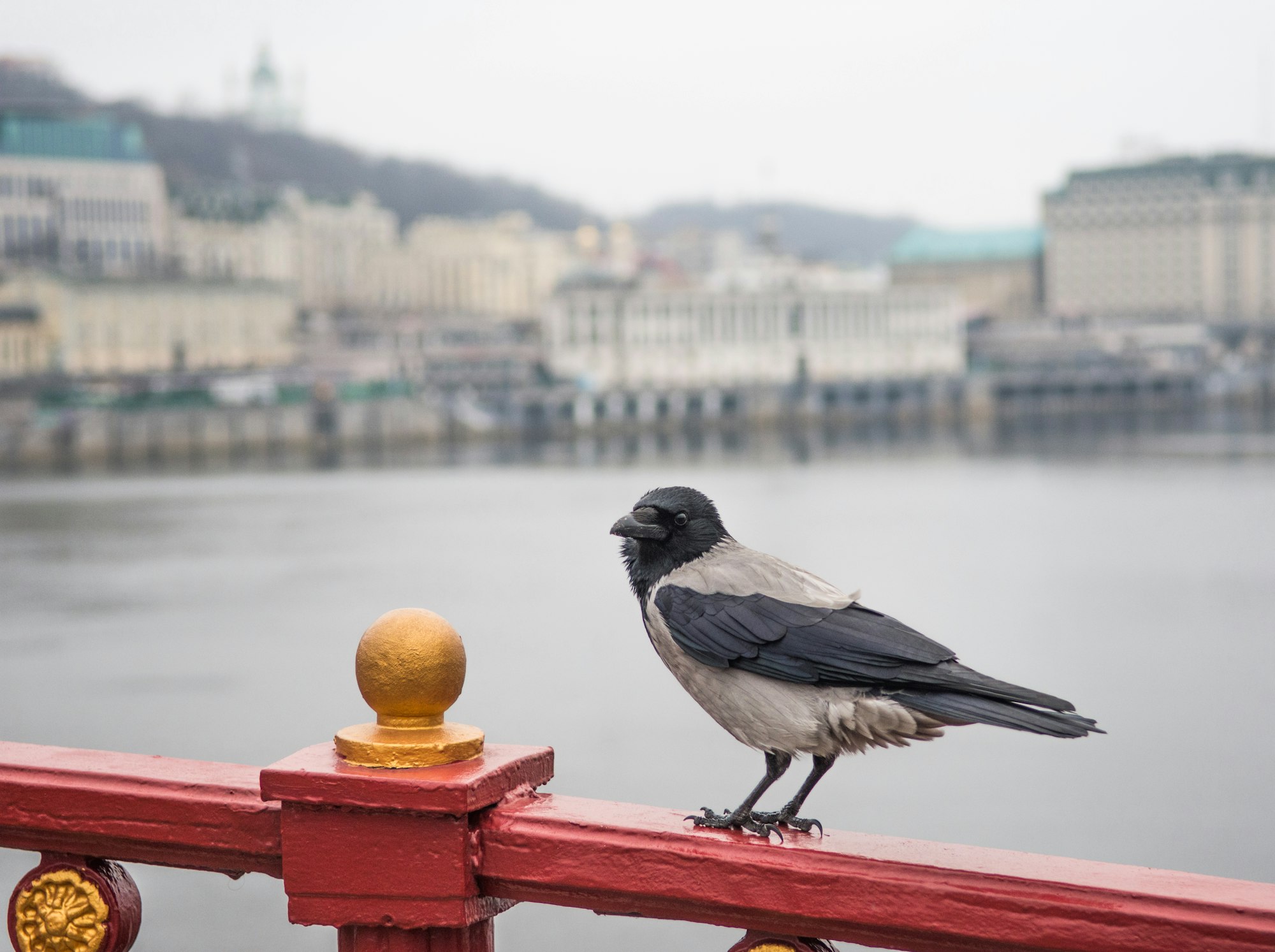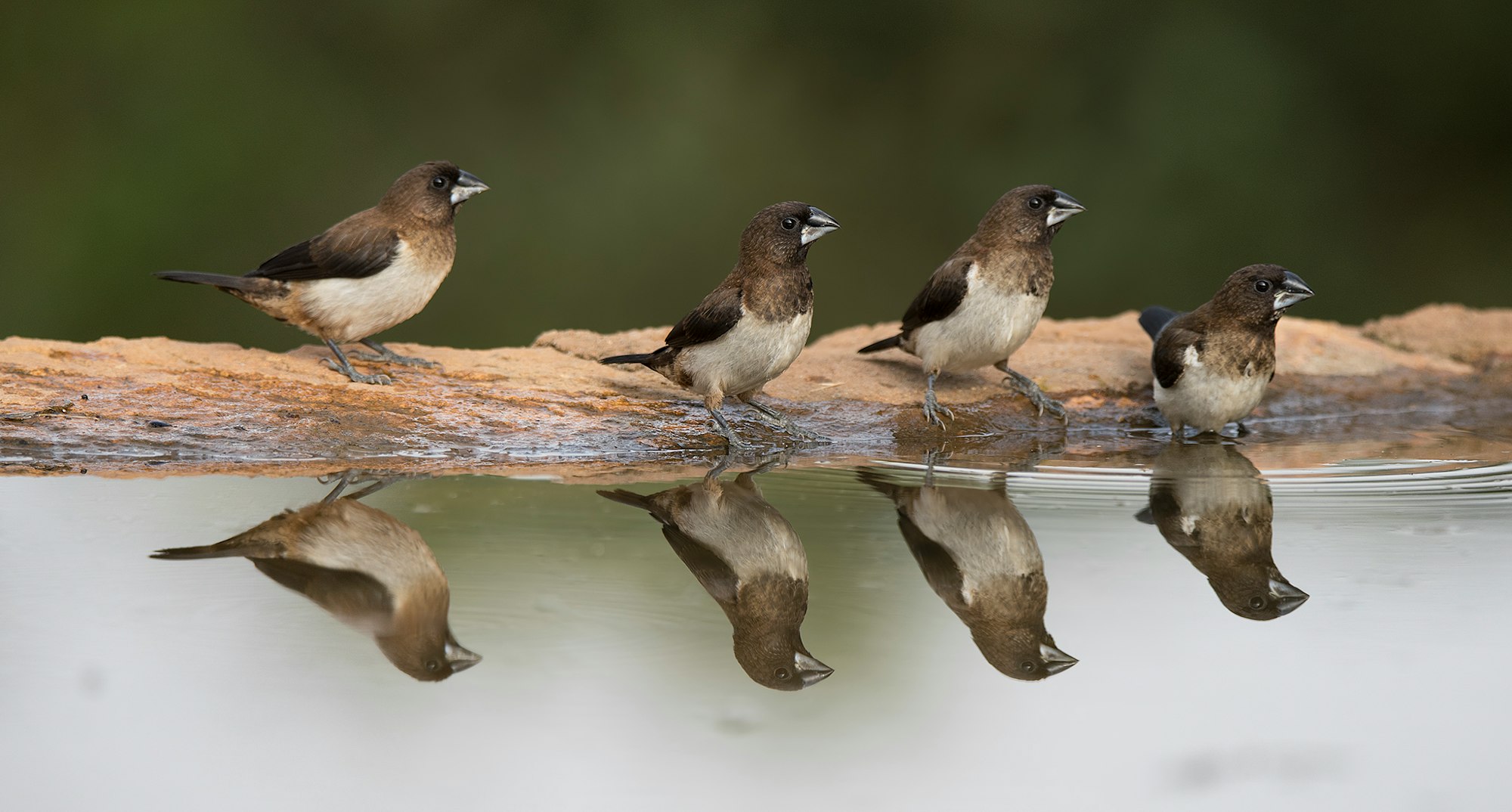Magpies, Ravens & Crows - The Evidence & Evolution Behind Corvid Cognition

How frequently do you see crows and ravens roaming the streets? For my part, I tend to see them practically every time I walk outside in London. Murders of crows (which is what dark-humoured Englishmen labelled groups of them) tend to line up neatly beside the river Thames and around the local parks in the area, waiting patiently for whatever worm or thrown piece of bread they might come across. They also set up nests in the surrounding trees - which can prove somewhat inconvenient during the spring. Have you ever walked under a tree with crow eggs lying in their nests before? I have not - but you would probably find that all corvids are fiercely protective of their young, especially since you can get quite a pecking for it. To some people, particularly rural farmers, corvids can also be rather irksome pests (even though they can help as some wonderful biological pest control if lead correctly). Unfortunately for them, the practice of trapping and killing the birds has been legally prohibited for a while now - and I say good! Why ever would you wish harm upon such fascinating creatures?
Another trait that corvids have in common - besides being, you know, birds - is their remarkable intelligence. Rivalling elephants, dolphins, orcas and even primates, the Corvidae are a taxonomic family of birds with some of the most developed cognitive capabilities in the Animal Kingdom. The efforts of ornithologists have brought much evidence that this is the case, particularly in the last 2 decades. In light of this, both neurologists and evolutionary scientists have taken an interest in corvids and their rather unique cleverness - so much so, in fact, that it is now shaping what we know of how animal consciousness first came into existence.
Dots & Mirrors
How do we know that crows, ravens, magpies and other corvids are so much more clever than other birds? For one, they belong in only a handful of the species we know of that are able to both use and craft their own tools. This has been shown by the many cognitive experiments testing their ability to solve logical problems, such as the use of rocks to increase the volume of water inside a tube to obtain the grains inside of it. In the wild, corvids have also been observed to drop walnuts from above to crack open their shells for food, alternatively using sticks to adroitly pick off tasty insects hidden in a tree's bark. There are plenty of videos you can find online of their feats. While they are all rather entertaining to watch, however, their problem-solving ability is only the beginning of the corvid's cognition.
Previous studies testing the recognition capabilities of Eurasian magpies (Pica pica) presented them in front of mirrors. Though individuals first appeared to confuse their reflected image with other magpies, displaying aggresive social behaviours like jumping towards the mirror, the magpies were eventually observed to look behind the mirror and habituate to it. Furthermore, when groups of black magpies had white dots painted on their necks, they were observed to rub their necks much more frequently with the mirror to look at than without. In other words, the birds knew that the mirror showed reflections of themselves and used it to (presumably) clean the white dots away. The magpies exhibited self-awareness - albeit a restricted version of it.

Another experiment by researchers from the University of Washington and the Willamette University further showcased the ability of corvids to recognise distinct features on other individuals - humans, in this case. In a brilliant flash of scientific curiosity, the team decided to wear very unique and peculiar masks when catching a group of up to 15 wild American crows (Corvus brachyrhynchos), soon after which they were released. Unsurprisingly, the crows did not like this; and they demonstrated their dissatisfaction rather fully. For at least 2.7 years after they were trapped and released, the crows involved were observed to scold and mob every human with the same peculiar masks that they came across - mostly ignoring all others in the process. People wearing blank masks were treated with relative indifference, too. The researchers thereby concluded that crows were able to discriminate between humans by their facial characteristics and hence could memorise masks - and most probably faces - over large durations.
We could continue investigating the list of trials done to test corvid cognition, talking of their complex social behaviours, communication, and perhaps even how well they are able to use acquired knowledge to infer possible future event outcomes (e.g., their use of speeding cars on the highway to crack open walnuts for them). I believe we can already tell that corvids are incredibly intelligent creatures, however - so why are they like this in the first place?
Bird Brains Vs Monkey Brains
In general, it is theorised by ecologists that the corvids' high intelligence evolved as a way to more easily adapt to complex, variable environments. Given the high competition of other bird species especially adapted to particular niches, this allowed the corvids to maintain the flexibility to alternate between different ecological niches should they need to. (So if there are too many woodpeckers in the area, for example - at least how I interpret it - they will probably not scavenge for food on trees. Instead, they will search more frequently on the ground or away from the woodpeckers.) What is really surprising about it, though, is the fact that their intelligence and neural mechanisms probably evolved independently from the ones in mammals. In other words, their brains are anatomically completely different from ours.
To truly understand the distinction between mammialian and bird consciousnees, we should first look at the basic anatomy of the primate brain. Principally, the brain consists of three types of matter known as the brain stem, the cerebellum and the cerebrum, ordered by increasing mass - the last of which is of particular interest to us. In primates, most of the cerebrum is made up of the cerebral cortex, which is folded and laminar in organisation (meaning that it consists of multiple layers arranged together). Although each part of the brain is absolutely essential to a working organism, consciousness in animals is usually associated with the cerebral cortex due to its several underlying roles in emotion, decision-making, motivation, social behaviours, and a list of other cognitive processes that are essential for thought expression. In turn, the cerebral cortex is split up into various segments called lobes that are dense with nerve cells, blood vessels, glands and many other interdependent structures tirelessly working together for our sake (and so I, for one, am very grateful for the lot!).

The cerebral cortex is also the part that forms the wrinkles around the primate brain. Here is the kicker, however. Carrions also have a cerebral cortex, with features variously related to their mammailian kind - but it is mostly smooth and uniform in appearance, very distinguishably from our own. It is also rather small; even the largest corvid brain (the one in ravens) only goes up to the size of a walnut. (So, yes, birds literally have walnut-brains.) Since this is the case, how is it that corvids can exhibit intelligence quotients just as advanced as orangutans and gorillas, which have brains that are theoretically so much more complex than theirs?
Complex neural experiments have provided an answer to the issue. Just as mammals contain a prefrontal cerebral cortex that plays a predominant role in sensory consciousness, corvids have an avian equivalent referred to as the nidopallium caudolaterale (NCL). Using trained carrion crows (Corvus corone), teams of researchers investigated how individual neurones in their NCL would react at different times with the intensity of a stimulus and a correlated perceptual report. Ultimately, such experiments have led to arguments proposing the capability of rationalisation in carrion crows, hence stating that they are very much capable of concious thought. Given the distinct form of their cerebrum compared to mammals, however, this meant some rather interesting conclusions about the evolution of animal consciousness.
The Evolution Of Thought
Birds are hypothesised to have diverged from mammals approximately 320 million years ago, a time before even dinosaurs roamed the earth. Should our previous theory of complex avian consciousness rivalling even primates be correct, well, then it means one of two things. Either birds evolved sensory consciousness independently from mammals over time or - more staggeringly - it has been a part of the Animal Kingdom since at least 320 million years ago. The latter point would also tell us that the cerebral cortex as it is today is not a necessary requisite for sensory consciousness (given how different bird and mammalian cortices are), and might even be possible in other creatures with simpler neural systems.
There are plenty of case studies on animal behaviour and neurology, and the general trends seem to hold mammals as the most intelligent individuals in the Animal Kingdom. Albeit, even current neurologists and psychologists do not fully understand the workings of advanced consciousness, and so it is useful to compare the examples that we have today. As we have seen, corvids have certainly made for quite an astonishing precedent in that regard; their walnut-brains are now regarded as worthy rivals to even the most cunning chimps we know. Research will continue on the matter - and it could very possibly be the future key to unlocking the secrets behind the thinking mind.

References
- Balakhonov, D. & Rose, J. (2017). Crows Rival Monkeys in Cognitive Capacity. Scientific Reports 7(1):8809. Retrieved from https://doi.org/10.1038/s41598-017-09400-0
- Prior, H., Schwarz, A. & Güntürkün, O. (2008). Mirror-induced behavior in the magpie (Pica pica): evidence of self-recognition. PLoS Biology 6(8):e202. Retrieved from https://doi.org/10.1371/journal.pbio.0060202
- Marzluff, J. M., Walls, J., Cornell, H. N., Withey, J. C. & Craig DP. (2010). Lasting recognition of threatening people by wild American crows. Animal Behaviour 79:699-707. Retrieved from https://doi.org/10.1016/j.anbehav.2009.12.022
- Taylor, A. H. (2014). Corvid cognition. Wiley Interdisciplinary Reviews: Cognitive Science 5(3):361-72. Retrieved from https://pubmed.ncbi.nlm.nih.gov/26308569/
- Kabadayi, C., et al. (2016). Ravens, New Caledonian crows and jackdaws parallel great apes in motor self-regulation despite smaller brains. The Royal Society. Retrieved from https://doi.org/10.1098/rsos.160104
- Nieder, A., Wagener, L. & Rinnert, P. (2020). A neural correlate of sensory consciousness in a corvid bird. Science 369(6511):1626-1629. Retrieved from https://doi.org/10.1126/science.abb1447
